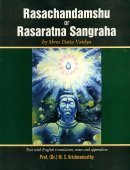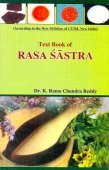Sambuka, Śambūka, Śambuka, Śāmbuka, Śāmbūka, Shambuka: 20 definitions
Introduction:
Sambuka means something in Buddhism, Pali, Hinduism, Sanskrit, Jainism, Prakrit. If you want to know the exact meaning, history, etymology or English translation of this term then check out the descriptions on this page. Add your comment or reference to a book if you want to contribute to this summary article.
The Sanskrit terms Śambūka and Śambuka and Śāmbuka and Śāmbūka can be transliterated into English as Sambuka or Shambuka, using the IAST transliteration scheme (?).
In Hinduism
Ayurveda (science of life)
Source: archive.org: Sushruta samhita, Volume IŚambūka (शम्बूक)—Sanskrit word for an animal “conch” (a bivalve shell, any shell or conch). This animal is from the group called Kośastha (conchiferous: ‘those which have a shell’). Kośastha itself is a sub-group of the group of animals known as Ānupa (those that frequent marshy places).

Āyurveda (आयुर्वेद, ayurveda) is a branch of Indian science dealing with medicine, herbalism, taxology, anatomy, surgery, alchemy and related topics. Traditional practice of Āyurveda in ancient India dates back to at least the first millenium BC. Literature is commonly written in Sanskrit using various poetic metres.
Purana and Itihasa (epic history)
Source: archive.org: Puranic EncyclopediaŚambūka (शम्बूक).—A Śūdra muni. During the reign of Śrī Rāma a great number of children died in the country and many parents wept before the king about the loss of their offsprings. According to Vasiṣṭha’s advice Rāma enquired whether anybody indulged in actions not proper to his station in life. Śrī Rāma surveyed the country from the air in a Vimāna, and during the survey he found Śambūka, the śūdra muni hanging with his head down and inhaling smoke from a fire lit under him. Thus, having found out that the tapas by that śūdra was the reason for the children’s death, Rāma killed Śambūka immediately. (Kamba Rāmāyaṇa, Uttarakāṇḍa).
Source: JatLand: List of Mahabharata people and placesŚambūka (शम्बूक) is a name mentioned in the Mahābhārata (cf. IX.44.71) and represents one of the many proper names used for people and places. Note: The Mahābhārata (mentioning Śambūka) is a Sanskrit epic poem consisting of 100,000 ślokas (metrical verses) and is over 2000 years old.

The Purana (पुराण, purāṇas) refers to Sanskrit literature preserving ancient India’s vast cultural history, including historical legends, religious ceremonies, various arts and sciences. The eighteen mahapuranas total over 400,000 shlokas (metrical couplets) and date to at least several centuries BCE.
General definition (in Hinduism)
Source: Wisdom Library: HinduismŚambūka (sanskrit word) can mean any of the following:
1) a bivalve shell, any shell or conch
2) a snail
3) a kind of animal (= ghoṅgha)
4) the edge of the frontal protuberance of an elephant
5) Name of a Śūdra (who had become a devotee and was slain by Rāma-candra)
6) Name of a Daitya.
Source: WikiPedia: HinduismShambuka is, in Hindu mythology, a character in some versions of the Ramayana. According to that version, Shambuka, a shudra ascetic, was slain by Rama for attempting to perform penance in violation of dharma, the bad karma resulting from which caused the death of a Brahmin's son. It is believed that Shambuka was beheaded in a hill at Ramtek, near Nagpur in Maharashtra.
In Buddhism
Mahayana (major branch of Buddhism)
Source: De Gruyter: A Buddhist Ritual Manual on AgricultureŚambūka (शम्बूक) refers to “snails” (responsible for crop-destruction, etc.), according to the Vajratuṇḍasamayakalparāja, an ancient Buddhist ritual manual on agriculture from the 5th-century (or earlier), containing various instructions for the Sangha to provide agriculture-related services to laypeople including rain-making, weather control and crop protection.—Accordingly, [As the Bhagavān teaches an offering manual]: “Having enchanted sand twenty-one times it should be scattered on all crops, flowers, fruits, leaves and trees. All pests fall down and perish. All snails (śambūka), horse flies, venomous snakes, centipedes and other pests of various kinds will be destroyed. Until the stake is drawn out they will not appear”.

Mahayana (महायान, mahāyāna) is a major branch of Buddhism focusing on the path of a Bodhisattva (spiritual aspirants/ enlightened beings). Extant literature is vast and primarely composed in the Sanskrit language. There are many sūtras of which some of the earliest are the various Prajñāpāramitā sūtras.
In Jainism
General definition (in Jainism)
Source: archive.org: TrisastisalakapurusacaritraŚambūka (शम्बूक) refers to one of the sons of Khara and Candraṇakhā (sister of Rāvaṇa), according to the Jain Ramayana and chapter 7.5 [The kidnapping of Sītā] of Hemacandra’s 11th century Triṣaṣṭiśalākāpuruṣacaritra: an ancient Sanskrit epic poem narrating the history and legends of sixty-three illustrious persons in Jainism.—Accordingly, “Now in Pātālalaṅkā there were two sons of Khara and Candraṇakhā, Śambūka and Suna, just grown up. Though restrained by his parents, Śambūka went one day to Daṇḍakāraṇya for the purpose of subduing the sword, Sūryahāsa. [...]”.

Jainism is an Indian religion of Dharma whose doctrine revolves around harmlessness (ahimsa) towards every living being. The two major branches (Digambara and Svetambara) of Jainism stimulate self-control (or, shramana, ‘self-reliance’) and spiritual development through a path of peace for the soul to progess to the ultimate goal.
Languages of India and abroad
Pali-English dictionary
Source: BuddhaSasana: Concise Pali-English Dictionarysambuka : (m.) an oyster; a shell.
Source: Sutta: The Pali Text Society's Pali-English DictionarySambuka, (cp. Sk. śambuka) a shell D. I, 84=A. I, 9; III, 395 (sippi°); J. II, 100. (Page 693)

Pali is the language of the Tipiṭaka, which is the sacred canon of Theravāda Buddhism and contains much of the Buddha’s speech. Closeley related to Sanskrit, both languages are used interchangeably between religions.
Sanskrit dictionary
Source: DDSA: The practical Sanskrit-English dictionaryŚambuka (शम्बुक).—A bivalve shell.
Derivable forms: śambukaḥ (शम्बुकः).
See also (synonyms): śambu, śambukka.
--- OR ---
Śambūka (शम्बूक).—[śamb-ūkaḥ Uṇādi-sūtra 4.43]
1) A bivalve shell (śambūkā also in this sense).
2) A small conch-shell.
3) A snail.
4) The edge of the frontal protuberance of an elephant.
5) Name of a Śūdra (who practised penance though forbidden to his caste and was in consequence slain by Rāma; see inter alia Uttararāmacarita 2 and R.15).
Derivable forms: śambūkaḥ (शम्बूकः).
--- OR ---
Śāmbuka (शाम्बुक) or Śāmbūka (शाम्बूक).—A bivalve-shell.
Derivable forms: śāmbukaḥ (शाम्बुकः), śāmbūkaḥ (शाम्बूकः).
Source: Cologne Digital Sanskrit Dictionaries: Shabda-Sagara Sanskrit-English DictionaryŚambuka (शम्बुक).—m.
(-kaḥ) A bivalve-shell: see śambūka .
--- OR ---
Śambūka (शम्बूक).—mf.
(-kaḥ-kā) A bivalve-shell. m.
(-kaḥ) 1. A conch-shell. 2. A snail. 3. A Sudra, who had become a devotee in the time of Ramachandra, and was slain by him. 4. The edge of the frontal protuberance of the elephant. 5. The name of a Daitya. E. śam to be tranquil, ūkan aff. and vuk augment; also with the vowel short, śambuka, and the final consonant then rejected, śambu; it is also read, śambukka and with the first vowel long, śāmbūka, &c.
--- OR ---
Śāmbuka (शाम्बुक).—m.
(-kaḥ) A bivalve-shell. E. aṇ pleonasm added to śambu; also read śāmbūka, &c.
Source: Cologne Digital Sanskrit Dictionaries: Benfey Sanskrit-English DictionaryŚambūka (शम्बूक).— (borrowed from ), I. m. (and f. kā), A bivalve shell. Ii. m. 1. A conch-shell. 2. A snail. 3. The edge of the frontal protuberance of an elephant. 4. The name of a Daitya. 5. A proper name, [Uttara Rāmacarita, 2. ed. Calc., 1862.] 42, 1.
--- OR ---
Śāmbūka (शाम्बूक).—śāmbūka = śambūka, q. cf.
Source: Cologne Digital Sanskrit Dictionaries: Cappeller Sanskrit-English DictionaryŚambūka (शम्बूक).—[masculine] conch-shell, snail, a cert. animal.
Source: Cologne Digital Sanskrit Dictionaries: Aufrecht Catalogus CatalogorumŚambuka (शम्बुक) as mentioned in Aufrecht’s Catalogus Catalogorum:—poet. [Subhāshitāvali by Vallabhadeva]
Source: Cologne Digital Sanskrit Dictionaries: Monier-Williams Sanskrit-English Dictionary1) Śambuka (शम्बुक):—[from śambu] m. (cf. below and śāmbuka) a bivalve shell, [cf. Lexicographers, esp. such as amarasiṃha, halāyudha, hemacandra, etc.]
2) [v.s. ...] a [particular] noxious insect, [Suśruta]
3) [v.s. ...] Name of a Śūdra, [Mahābhārata] ([Bombay edition] jambuka), [Raghuvaṃśa] ([varia lectio] kañcuka)
4) [v.s. ...] of a poet, [Subhāṣitāvali]
5) Śambūka (शम्बूक):—[from śambu] m. a bivalve shell, any shell or conch, [Kāvya literature; Kathāsaritsāgara; Suśruta] (also f(ā). , [cf. Lexicographers, esp. such as amarasiṃha, halāyudha, hemacandra, etc.])
6) [v.s. ...] a snail, [Horace H. Wilson]
7) [v.s. ...] a kind of animal (= ghoṅgha), [cf. Lexicographers, esp. such as amarasiṃha, halāyudha, hemacandra, etc.]
8) [v.s. ...] the edge of the frontal protuberance of an elephant, [cf. Lexicographers, esp. such as amarasiṃha, halāyudha, hemacandra, etc.]
9) [v.s. ...] Name of a Śūdra (who had become a devotee and was slain by Rāma-candra), [Rāmāyaṇa; Uttararāma-carita] (cf. śambuka)
10) [v.s. ...] of a Daitya, [cf. Lexicographers, esp. such as amarasiṃha, halāyudha, hemacandra, etc.]
11) Śāmbuka (शाम्बुक):—[from śāmbava] m. a bivalve shell, [Horace H. Wilson]
12) Śāmbūka (शाम्बूक):—[from śāmbava] m. = śāmbuka, [cf. Lexicographers, esp. such as amarasiṃha, halāyudha, hemacandra, etc.]
Source: Cologne Digital Sanskrit Dictionaries: Yates Sanskrit-English Dictionary1) Śambuka (शम्बुक):—(kaḥ) 1. m. Idem.
2) Śambūka (शम्बूक):—[(kaḥ-kā)] 1. m. f. Idem. m. A conch; a snail; a Shudra devotee slain by Rāma; a daitya; edge of the frontal protuberance of the elephant.
3) Śāmbuka (शाम्बुक):—(kaḥ) 1. m. A bivalve shell.
Source: DDSA: Paia-sadda-mahannavo; a comprehensive Prakrit Hindi dictionary (S)Śambuka (शम्बुक) in the Sanskrit language is related to the Prakrit words: Saṃbukka, Saṃbūa.
[Sanskrit to German]
Sanskrit, also spelled संस्कृतम् (saṃskṛtam), is an ancient language of India commonly seen as the grandmother of the Indo-European language family (even English!). Closely allied with Prakrit and Pali, Sanskrit is more exhaustive in both grammar and terms and has the most extensive collection of literature in the world, greatly surpassing its sister-languages Greek and Latin.
Kannada-English dictionary
Source: Alar: Kannada-English corpusŚaṃbuka (ಶಂಬುಕ):—
1) [noun] any of various slow-moving mollusks of the class Gastropoda, having a spirally coiled shell and a ventral muscular foot; a snail.
2) [noun] a small conch.
3) [noun] name of a demon killed by Rāma.
--- OR ---
Śaṃbūka (ಶಂಬೂಕ):—[noun] = ಶಂಬುಕ [shambuka].
--- OR ---
Saṃbuka (ಸಂಬುಕ):—[noun] a kind of boat.
Kannada is a Dravidian language (as opposed to the Indo-European language family) mainly spoken in the southwestern region of India.
Nepali dictionary
Source: unoes: Nepali-English DictionaryŚambūka (शम्बूक):—n. 1. a bivalve shell; 2. a small conch-shell; 3. a snail;
Nepali is the primary language of the Nepalese people counting almost 20 million native speakers. The country of Nepal is situated in the Himalaya mountain range to the north of India.
See also (Relevant definitions)
Starts with: Campukam, Campukana, Shambukapushpi, Shambukavarta.
Query error!
Full-text: Sambu, Shambukapushpi, Shambukka, Campukam, Shamvuka, Sambua, Shankhanakha, Shambook, Shambukavarta, Koshastha, Sippi, Krauncarava, Ambumatraja, Suryahasa, Parivritta, Suna, Samva, Jambuka, Kambu.
Relevant text
Search found 29 books and stories containing Sambuka, Śambūka, Śambuka, Śāmbuka, Śāmbūka, Śaṃbuka, Śaṃbūka, Saṃbuka, Shambuka; (plurals include: Sambukas, Śambūkas, Śambukas, Śāmbukas, Śāmbūkas, Śaṃbukas, Śaṃbūkas, Saṃbukas, Shambukas). You can also click to the full overview containing English textual excerpts. Below are direct links for the most relevant articles:
Notices of Sanskrit Manuscripts (by Rajendralala Mitra)
Paumacariya (critical study) (by K. R. Chandra)
V.2. Death of Sambuka and Candranakha’s displeasure < [Chapter 3 - Comparative study of the Rama-story]
4. What do the Peculiarities of Paumacariyam Reveal? < [Chapter 6 - Sources, contribution and influence of Paumacariyam]
11. Conclusion < [Chapter 6 - Sources, contribution and influence of Paumacariyam]
Trishashti Shalaka Purusha Caritra (by Helen M. Johnson)
Part 10: Killing of Śambūka < [Chapter V - The kidnapping of Sītā]
Part 13: Sītā visits Lakṣmaṇa in hell < [Chapter X - Rāma’s mokṣa (emancipation)]
Part 12: Future births of Rāvaṇa, Lakṣmaṇa, and Sītā < [Chapter X - Rāma’s mokṣa (emancipation)]
Puranic encyclopaedia (by Vettam Mani)
Rasa Jala Nidhi, vol 4: Iatrochemistry (by Bhudeb Mookerjee)
Part 36 - Treatment for chronic diarrhea (8): Grahani-kapata rasa < [Chapter III - Jvaratisara fever with diarrhoea]
Part 72 - Recipes of certain medicines having no minerals in them < [Chapter III - Jvaratisara fever with diarrhoea]
International Ayurvedic Medical Journal
Sudha varga, the calcium substitutes in ayurveda: a review < [2023, Issue 11. November]
Collocation of rasa dravyas – an exploration < [2018, Issue IX, September]
Application of shatkriya kala in bhagandara - a critical review < [2023, Issue 02, February]
Related products

